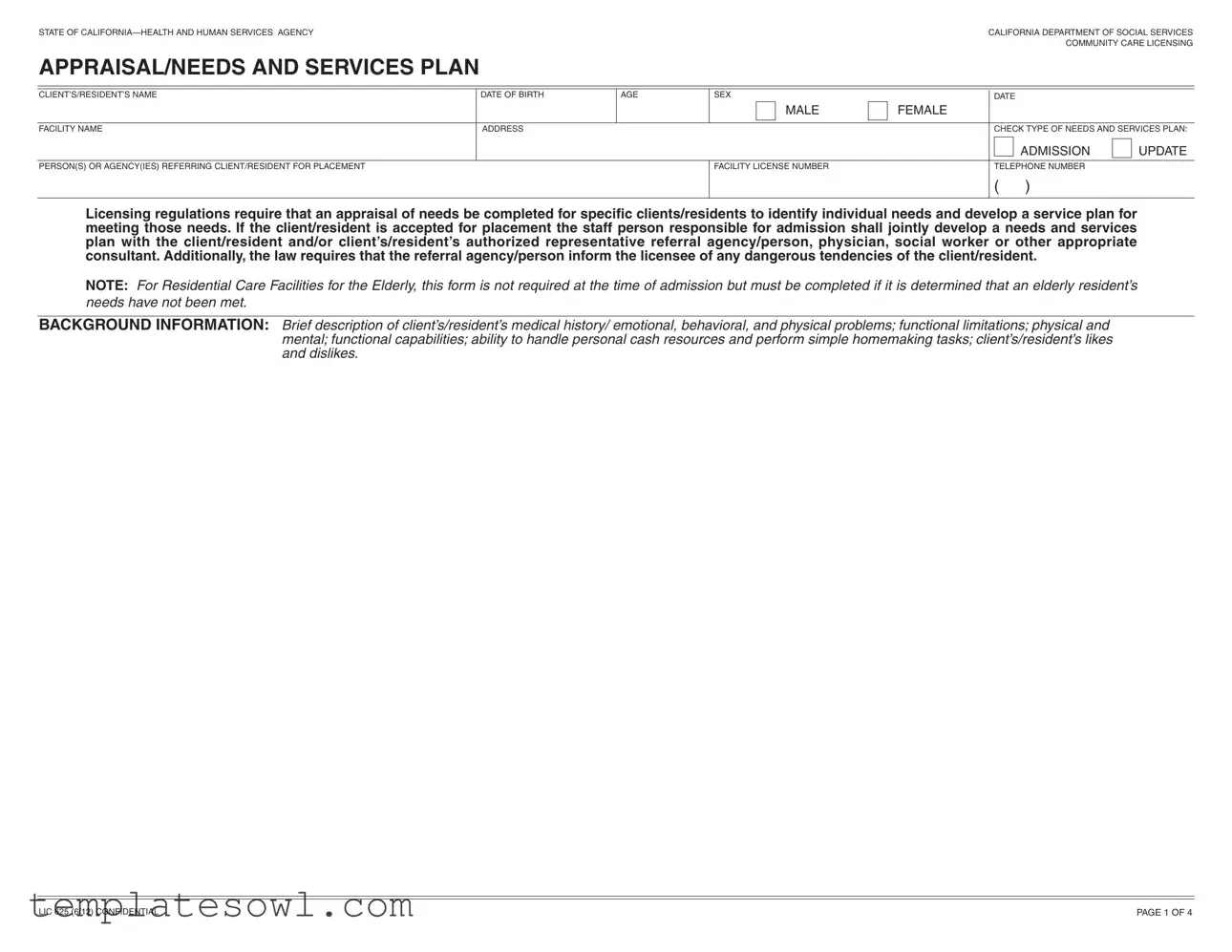Filling out the Lic 625 form is a crucial step in ensuring that clients receive the appropriate care and services they need. However, mistakes can happen, and some common errors can cause significant issues down the line. Awareness of these pitfalls can help a lot.
One common mistake is leaving information blank. Some sections of the form, like medical history and functional capabilities, are essential for developing a suitable service plan. Omissions can lead to misunderstandings about a client's needs, resulting in inadequate care. Ensure that every relevant box is checked and that detailed information is provided.
Another frequent error is inaccurately assessing the client's needs. The form includes areas detailing emotional, physical, and mental health challenges. It's vital to be honest and thorough in this assessment. If there's uncertainty about a client's condition, consulting with a healthcare professional or social worker can provide clarity. The aim is to create a comprehensive picture to guide care.
People often overlook the requirement to update the form promptly. If a client’s needs change, failure to update the Lic 625 can hinder the ability to provide proper services. Regular reviews and revisions must be a part of your process, ensuring that information remains current and accessible.
Another key mistake is neglecting to include all stakeholders in the process. The form emphasizes collaboration among the client, their representatives, and service providers. Involving all relevant parties ensures a well-rounded understanding of the client's needs and capabilities. This collaborative approach can lead to more effective and personalized care solutions.
Misunderstanding the evaluation methods is also a concern. The form asks for ways to assess progress toward objectives. If these methods are unclear, progress can be misjudged, which can affect the effectiveness of the service plan. Define specific, measurable actions for evaluating each need, making it easier to track progress over time.
Lastly, people sometimes forget the importance of signatures. Each section of the form requires appropriate signatures confirming that the information is accurate and that there’s agreement on the care plan. Missing a signature may lead to delays or questions about consent, so always triple-check that every necessary party has signed off.
By avoiding these mistakes, you can help ensure that the Lic 625 form is filled out correctly, thus providing clients with the care they truly deserve. Remember, thoroughness and clarity are key.




